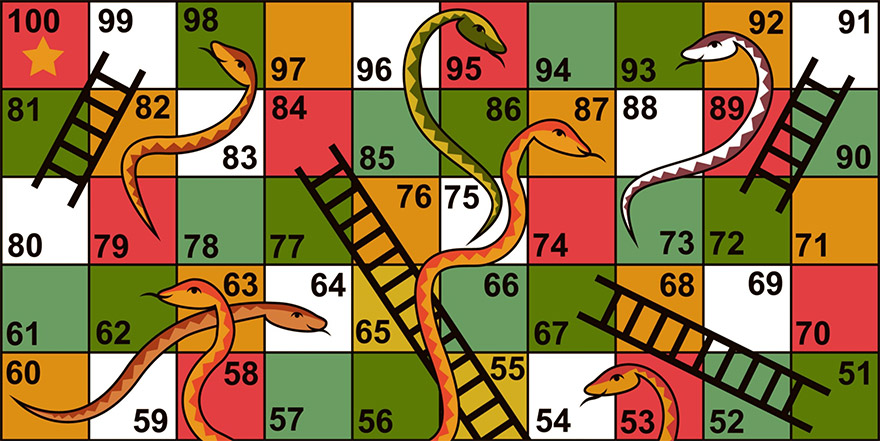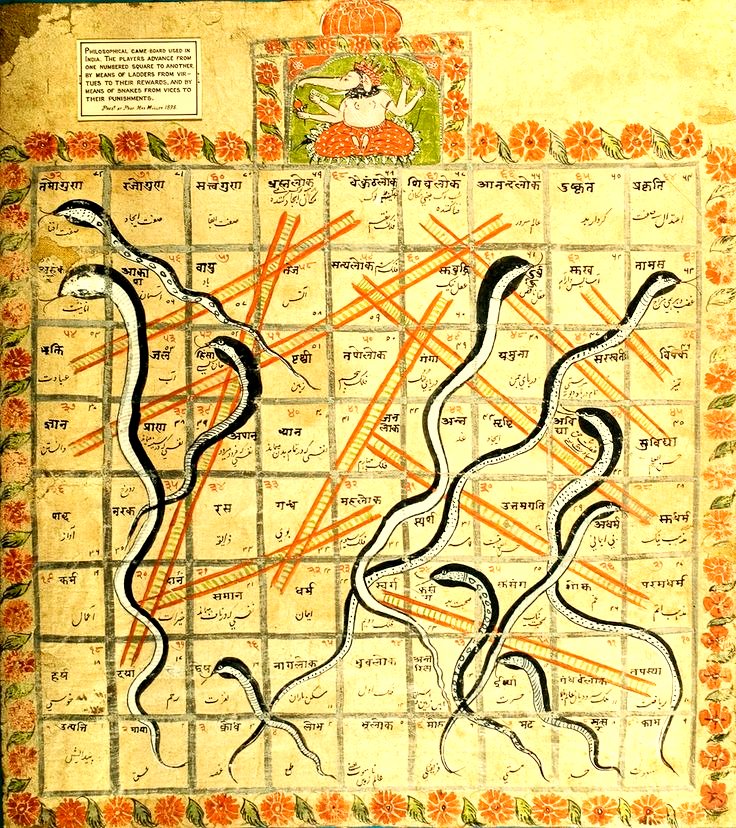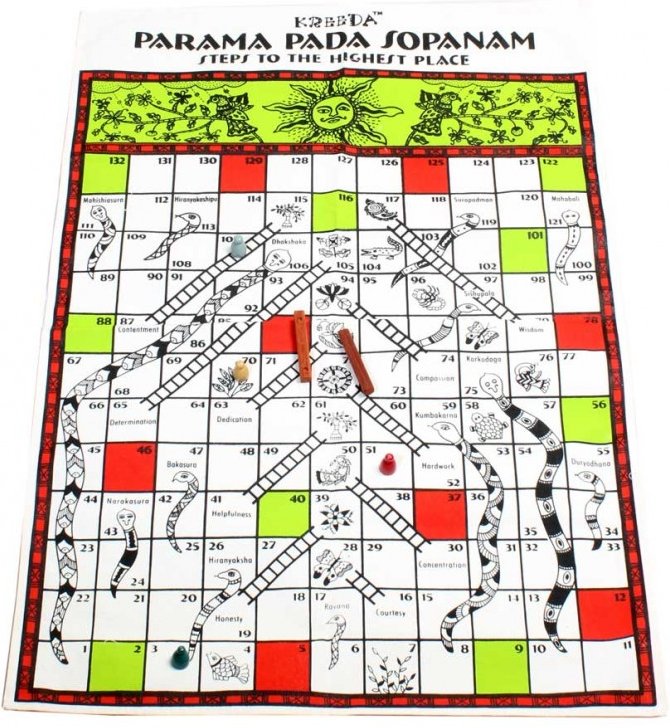
Snakes and Ladders is an ancient Indian game which was brought to the west by the British in 1892. It was called Mokshapath meaning Path to Salvation. In sanskrit Moksha=Salvation and Path=Path
Let Us Understand Its Basics:
The vedic (hindu) belief about life and death is of rebirth. One life form might be reborn as any form of life after its death. A human in this birth might be reborn as an insect in his next birth. A frog in this birth might be reborn as a human in its next birth!
This cycle of life and death and rebirth continues, which is why the vedas say that soul never dies! Depending on how well a soul spends its life doing good things, it can be freed from this cycle of life, death and rebirth and attain Moksha (Probably enter heaven and live happily ever after!).
So the aim of life is to attain this Moksha or Nirvana! Vedas say that it is extremely lucky to be born as a human and that one should not miss this opportunity to get the most out of it. One has to use this to get Moksha where a normal soul (Aatma) gets united with the Universal soul (Paramaatma) and is freed from the cycle of birth and death! There are stories in vedas where even other life forms like animals attained Moksha by their good deeds! So its not limited to humans alone!

This game originated in ancient India and was called Mokshapath which means the path of salvation. The ultimate goal of the game was to achieve salvation by reaching the top. Every time a person does a bad deed, he ends up at the snake’s mouth and is demoted in the game of attaining salvation.
Every time a person does a good deed, he ends up at the ladder’s bottom and is promoted upwards in the game of attaining salvation.! The aim of this game was to teach children the basic tenets of hindiusm that lies in the vedas. Good deeds we move up in life. Bad deeds and we move down in life. The ladders represented virtues and snakes vices.
The game was drawn out on a cloth divided into blocks called houses, each representing emotions. For ex: the snake at hinsa (violence) would take one down to mahanaraka (great hell) while ladder at Vidyabhyas (education) would take one up to the Shastras (knowledge). The game was played with dices and cowrie-shells.

In the Original game, These Were the Squares Where Ladder was Found to Move Upwards:
12 was faith
51 was Reliability
57 was Generosity
76 was Knowledge
78 was Asceticism.
Snakes were Found at the Following Squares:
41 was for Disobedience
44 for Arrogance
49 for Vulgarity
52 for Theft
58 for Lying
62 for Drunkenness
69 for Debt
73 for Murder
84 for Anger
92 for Greed
95 for Pride
99 for Lust
100 was the square of Moksha or Nirvana! The ultimate goal of the game. You win when you reach the 100th square!
The british took this game to England from India in 1892 and called it snakes and ladders. (Its a rather very uninteresting name, compared to Mokshapath – Path of Nirvana.)
Source : India Divine




